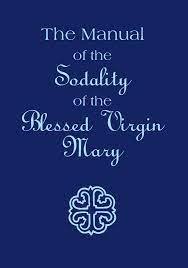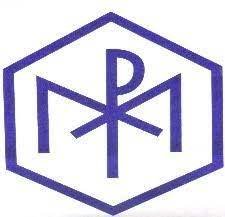
A BRIEF HISTORY OF MARIAN SODALITIES
The Sodality of the Blessed Virgin Mary was founded by a Belgiam scholastic, Jan Leunis, in 1563. Eager to foster his students’ spiritual growth, he assembled the more zealous of them in a classroom of the Roman college during after-school hours for prayer and pious exercises, especially in honor of Mary. In 1564 there were seventy members. The group drew up a set of rules. Sodalities modelled on this group soon sprang up in Jesuit colleges throughout Europe, and the original group in Rome became known as the ‘first’ or ‘head’ or ‘central’ congregation or sodality (Primaria Congregatio seu Primariam Sodalitium). As it became too large to meet in one classroom it was divided into three sections: the Prima primaria, the ‘first head or central’ sodality, for the young men over 21, the Secunda primaria for those 14 to 21, and the Tertia primaria for those below 14. By the bull Omnipotentis Dei of December 5, 1584, Pope Gregory XIII canonically erected the Prima primaria as a congregation or sodality, granted it numerous indulgences, and conferred on the Jesuit general power to erect other similar congregations and affiliate them to the Prima pirmaria [congregation], the ‘First Principal [Congregation].’ In that era the terms congregation sodality, and confraternity were often used as synonyms to designate a body of the faithful, especially non-religious, who aimed to foster Catholic life by means of special exercises, and were governed by an ecclesiastical superior.
Sodalities affiliated to the Prima primaria grew rapidly in number, and soon existed in connection with virtually all Jesuit colleges, churches, and residences in Europe and the Americas. They were groups of persons seriously cultivating their personal interior lives and apostolic activities. By 1580 there were some 30,000 members of affiliated sodalities. In 1586 Pope Sixtus V permitted membership to others than students. In the ‘Golden bull’ of September 27, 1748, Benedict XIV enlarged the privileges and indulgences; and in a brief of September 8, 1751, he granted the Jesuit general authority to affiliate with the Prima primaria any sodality of either sex which was connected with a Jesuit house or church. Between the suppression and restoration of the Society (1773-1814) the sodalities were kept in existence by the pope and zealous pastors. In 1824 Leo XII restored to the Jesuit general his former powers in regard to sodalities. In 1825 the same Pope granted the general faculties to affiliate to the Prima primaria, with the consent of a bishop involved, sodalities which were outside of Jesuit institutions. Thereafter growth of the movement was steady and rapid. In the United States alone, for example, 55 sodalities were affiliated up to 1854, 178 in the decade 1854-1864, and 304 in 1864-1874, 589 in 1874-1884, 1,124 in 1884-1894, 1,368 in 1894-1904, 1758 in 1904-1914, 2,357 in 1914-1926. In the world at large, some 35,000 new sodalities were affiliated to the Prima primaria within fifty years after the definition of the Immaculate Conception in 1854. In 1963, about 85,000 sodalities in more than 1,300 dioceses were on the list of affiliates.
The above excerpt was taken from: Ganss, S.J, George. (1975). The Christian Life Communities as Sprung from the Sodalities of Our Lady. Studies in the Spirituality of Jesuits, Vol. VII.2 pp. 45-50
SODALITY EMBLEM
The emblem to the right was adopted as the official symbol for all Sodalities in the world at the International Sodality Congress held at Barcelona, Spain in 1947. By that time, numerous Sodalities in various countries had already adopted this emblem, or some form of it adapted to the specific name of the Sodality. The emblem is composed of three Greek letter; “chi,” “rho,” and “mu." As explained below, the emblem aptly expresses the nature of a Sodality - to Jesus through Mary.
The first two greek letters - “chi” and “rho” - have been used by the early Church to stand for the name of Christ. The Greek letter Chi, written in uppercase, resembles the letter X in the commonly used Latin alphabet. The Greek letter Rho, written in uppercase, resembles the letter P in the commonly used Latin alphabet. An artistic overlay of these letters gives us the ancient symbol for Christ
The third Greek letter is the ancient reference to Our Lady’s name, Mary. The Greek letter Mu, written in uppercase, resembles the letter M in the commonly used Latin alphabet. An artistic overlay of all three Greek letters gives us the emblem of the Sodality.
JOIN US FOR THE SODALITY CONGRESS ON JUNE 11-12










